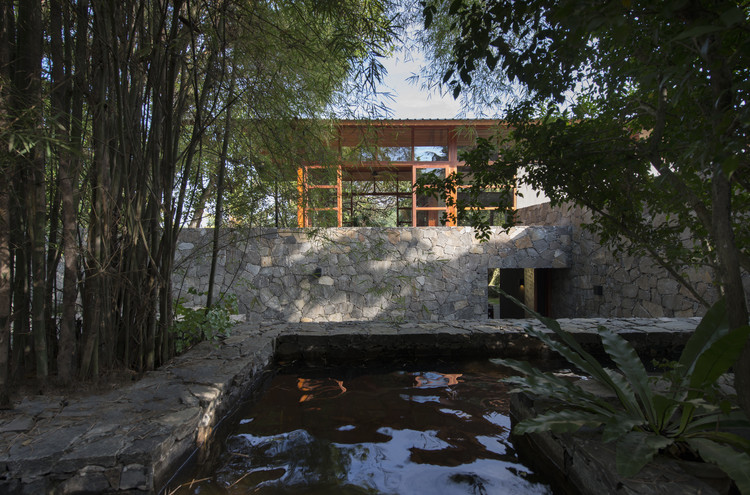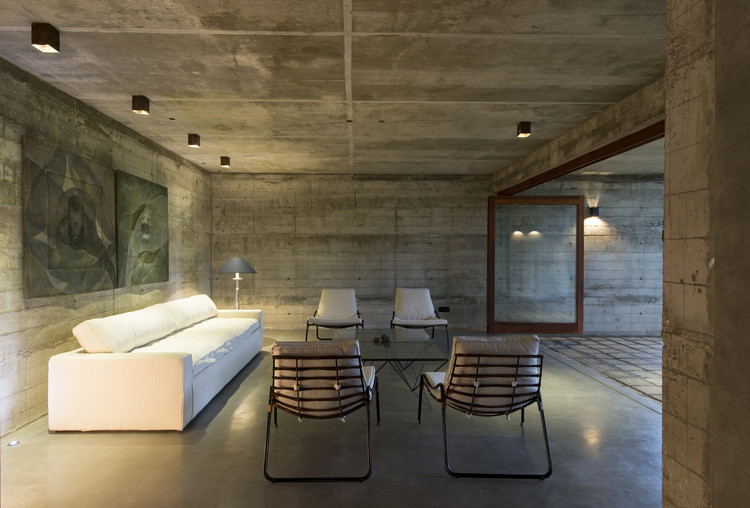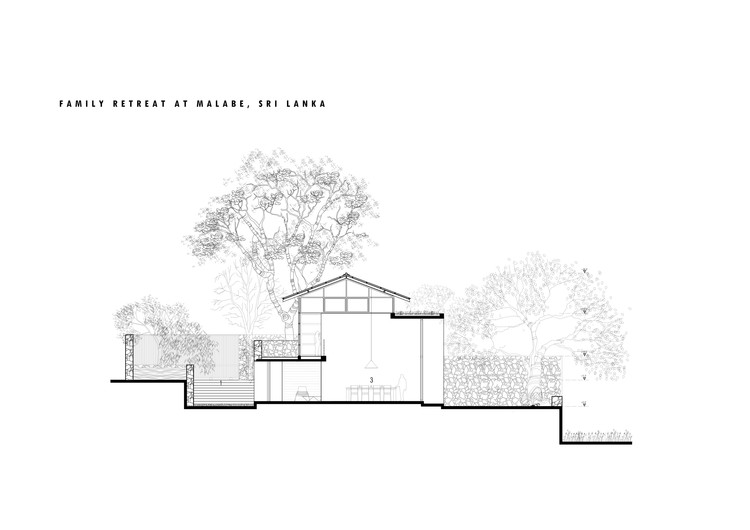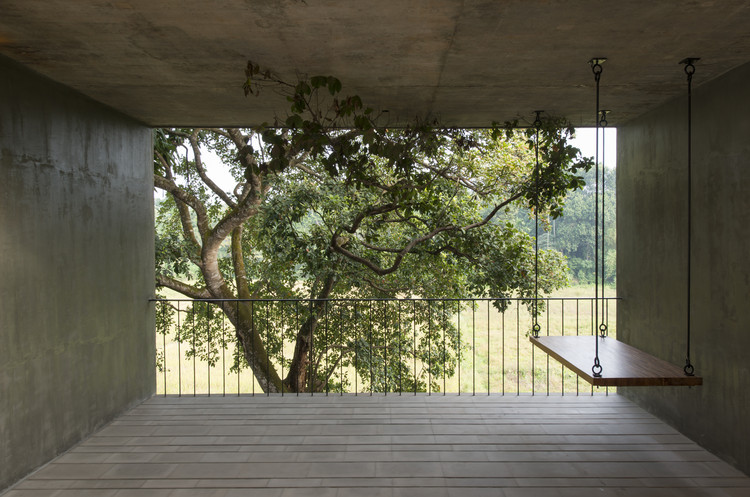
-
Architects: Palinda Kannangara Architects
- Area: 760 m²
- Year: 2014
-
Photographs:Sebastian Posingis
-
Manufacturers: Presstona, Raux Brothers and Lee furniture

Text description provided by the architects. Located close to paddy fields and fringed by distant woodland this second home on 30 perches ( 760 sqm) has been conceived of as a retreat for a couple who had spent a significant part of their life in a Colombo city house and desired for a tranquil space away from the hectic bustle of the city and that would enable them to live in close proximity to nature. This retreat provides a space for the owners to pursue their individual passions for gardening and writing. The owner is a scholar of Buddhist Philosophy and is working on a book.



The old building was a neglected 1980’s house with limited ventilation, dark interiors and no connections to the paddy landscape that surrounded the house. The new building kept the structure of the old, while reorganizing to maximize views, opening out to allow light and to integrate the built with the landscape. The existing levels were retained and made use of. The new house is built on the same footprint as the old. The foreground to the existing structure too was retained along with the marvelous canopy trees that were on the site (all saved), and a new living and service block was added, interior layout was revised with the requirements of the clients.

The lower level which overlooks paddy fields contains the living dining spaces, a pantry, a study and master bedroom separated from the service block through a paved courtyard (which accommodates informal dining). The upper level has a family /tv lounge extending into a verandah that overlooks the large garden, canopy trees, lily pond, bamboo groves and apart from a bedroom replete with a balcony that projects into the trees.

The entire house is passively ventilated, serene courtyards, pond, green roofs and green wall (with native ferns and mosses), and large canopy trees all ensure cool microclimate within this house. And green roof over the utility area planted with native plants attracts biodiversity and captures storm water.

Locally available materials, including a combination of reclaimed and custom designed were used. A simple but tactile material palette was adopted and the colors and textures of the architecture blend into the environment of the canopy trees and the paddy fields.















